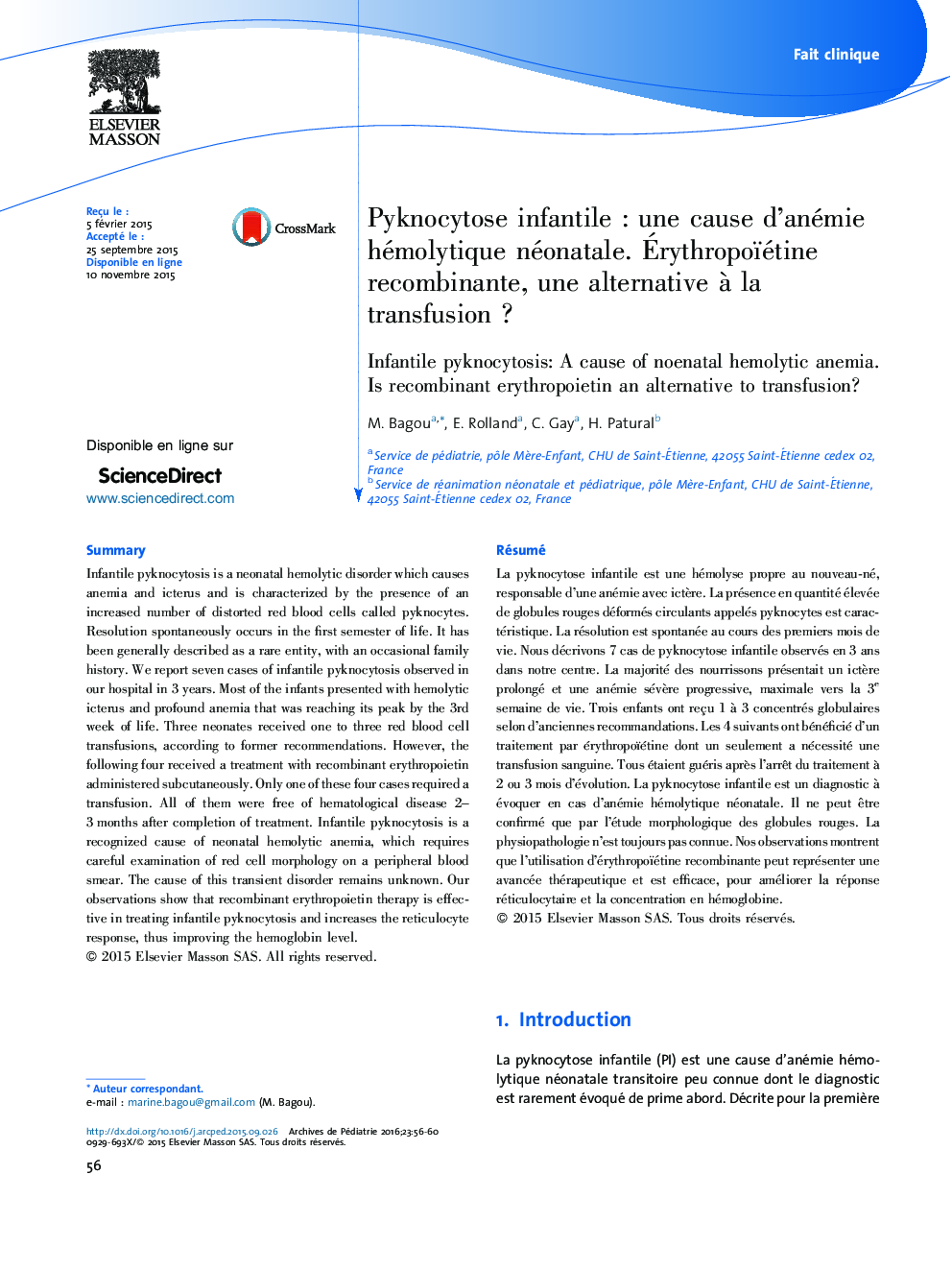| کد مقاله | کد نشریه | سال انتشار | مقاله انگلیسی | نسخه تمام متن |
|---|---|---|---|---|
| 4145451 | 1272607 | 2016 | 5 صفحه PDF | دانلود رایگان |

RésuméLa pyknocytose infantile est une hémolyse propre au nouveau-né, responsable d’une anémie avec ictère. La présence en quantité élevée de globules rouges déformés circulants appelés pyknocytes est caractéristique. La résolution est spontanée au cours des premiers mois de vie. Nous décrivons 7 cas de pyknocytose infantile observés en 3 ans dans notre centre. La majorité des nourrissons présentait un ictère prolongé et une anémie sévère progressive, maximale vers la 3e semaine de vie. Trois enfants ont reçu 1 à 3 concentrés globulaires selon d’anciennes recommandations. Les 4 suivants ont bénéficié d’un traitement par érythropoïétine dont un seulement a nécessité une transfusion sanguine. Tous étaient guéris après l’arrêt du traitement à 2 ou 3 mois d’évolution. La pyknocytose infantile est un diagnostic à évoquer en cas d’anémie hémolytique néonatale. Il ne peut être confirmé que par l’étude morphologique des globules rouges. La physiopathologie n’est toujours pas connue. Nos observations montrent que l’utilisation d’érythropoïétine recombinante peut représenter une avancée thérapeutique et est efficace, pour améliorer la réponse réticulocytaire et la concentration en hémoglobine.
SummaryInfantile pyknocytosis is a neonatal hemolytic disorder which causes anemia and icterus and is characterized by the presence of an increased number of distorted red blood cells called pyknocytes. Resolution spontaneously occurs in the first semester of life. It has been generally described as a rare entity, with an occasional family history. We report seven cases of infantile pyknocytosis observed in our hospital in 3 years. Most of the infants presented with hemolytic icterus and profound anemia that was reaching its peak by the 3rd week of life. Three neonates received one to three red blood cell transfusions, according to former recommendations. However, the following four received a treatment with recombinant erythropoietin administered subcutaneously. Only one of these four cases required a transfusion. All of them were free of hematological disease 2–3 months after completion of treatment. Infantile pyknocytosis is a recognized cause of neonatal hemolytic anemia, which requires careful examination of red cell morphology on a peripheral blood smear. The cause of this transient disorder remains unknown. Our observations show that recombinant erythropoietin therapy is effective in treating infantile pyknocytosis and increases the reticulocyte response, thus improving the hemoglobin level.
Journal: Archives de Pédiatrie - Volume 23, Issue 1, January 2016, Pages 56–60